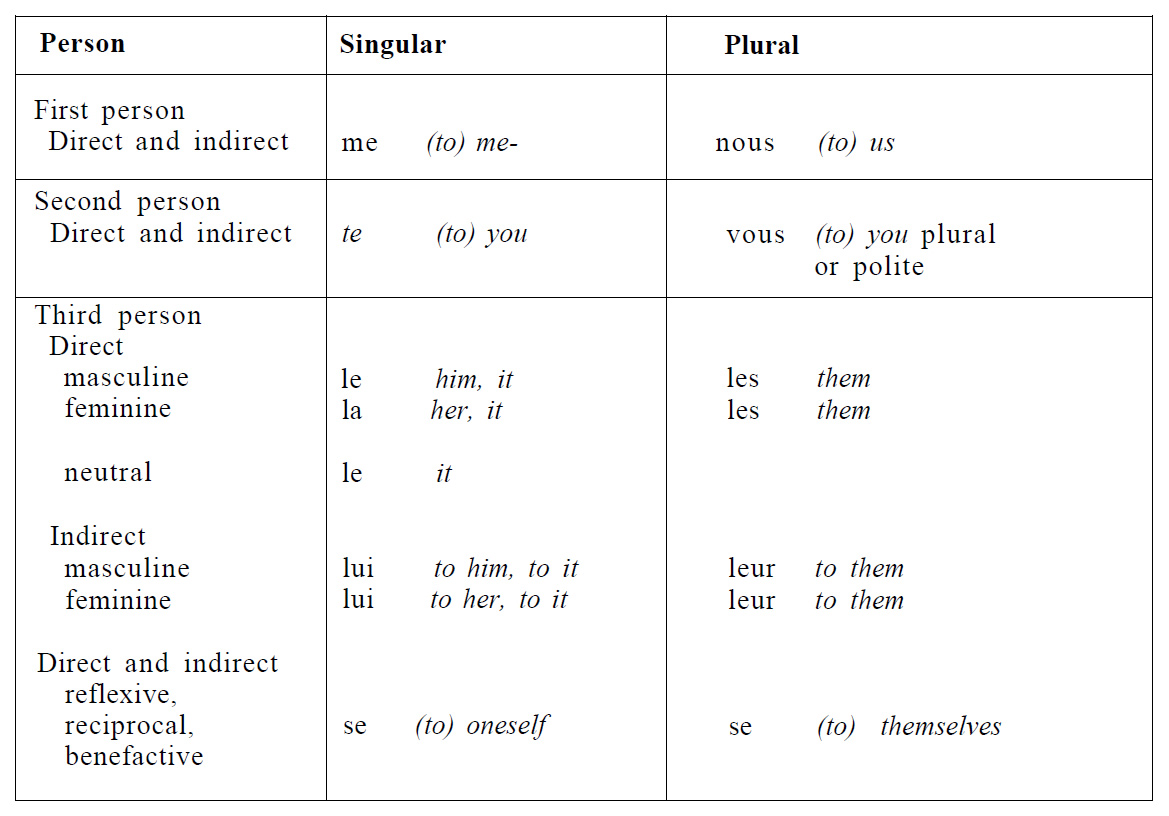Language/French/Grammar/Object-pronouns-Correctly-identifying-the-direct-and-indirect-objects-in-English-and-French
Many of the problems which learners have with pronouns are not caused by a failure to know what the pronouns are, but by a failure to recognize which pronoun French requires in a particular structure. This is especially true of indirect object pronouns. The structure of English and French verbs, even when they have similar meanings, is not necessarily the same: in a given sentence it is essential to know whether the object is direct or indirect in relation to the French verb and NOT the English verb. Thus, in the English sentence 'They advised Stéphane to leave', 'Stéphane' is the direct object of 'advised', and with a pronoun the sentence becomes 'They advised him to leave'. But in the French equivalent - Ils ont conseillé à Stéphane de partir - Stéphane is the indirect object of conseiller. With a pronoun the French sentence becomes: Ils lui ont conseillé de partir
Table Personal and impersonal pronouns : Summary table of object pronouns
Table y and en
| Pronoun | Stands in the place of |
| y | a phrase introduced by à, en, dans, sur |
| e.g. à Paris, en ville, dans sa chambre | |
| en | a phrase which begins with de |
| e.g. de son idée |


